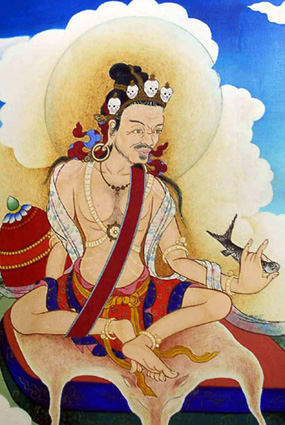This graphic illustrates the grandfather paradox, a secular koan demonstrating the inability of the human mind to grasp reality.
Alright, it's actually La avo-paradokso, which means "the grandfather paradox" in Esperanto, because it's still July and I'm still licensed to go a bit off the rails. And as we'll see, those rails can be hard to discern, anyway.
For starters, let's acknowledge from the outset that the above premise cannot be tested, because we don't have a tempomaŝino (time machine). But that doesn't stop us using it to challenge our mental faculties.
So, starting at 12 o'clock and proceeding horloĝdirekte (clockwise):
I invent a time machine.
I travel into the past.
I kill my grandfather.
My father isn't born.
I'm not born.
I don't invent a time machine.
I don't travel into the past.
My grandfather is born.
My father is born.
I'm born.
I invent a time machine.
I travel into the past...
You can see that though the proposition is (science-)fictional, the conceptual challenge is real. It's an example of a reality that the human mind can't perceive:
– It's impossible to kill your grandfather, because if you did, you wouldn't exist.
– But you do exist, so if you could go back in time you could totally kill your grandfather.
– Except you couldn't, because if you did, you'd never exist in the first place, so you couldn't kill anybody.
– But you do exist, therefore…
The solution? There isn't one.
Not if you're human.
Because your primitive reason runs on logic, which is why all the Vidyārājas are sniggering at you.
(However, consider that we might come to realise even this concept if we could live it. The human brain has the capacity to pencil out and penetrate circumstances that utterly lack logical sense, if it stands in front of them. I only hope our grandfathers arm themselves well if ever that comes to pass.)
Buddhism has long taught that time is neither linear nor universal; timelines are numberless, each running at its own speed and in its own direction. The variance between the classical reincarnation of Hindu and some Buddhist worldviews, and Zen's messy ad hoc concept of transmigration, originates in this contention.
That's why we developed koans, which are meant to jazz that part of the brain that can't grok the great stretch of reality that lies beyond dualistic perception. ("What was your face before your grandmother was born?" seems an appropriate example.) This also goes a long way toward explaining those wild tales of monastery practice: the decades of mu-pondering, the dharma combat, insight expressed by farting and slapping and barking like a dog. Because extracranial notions exceed language.
You can find an in-depth philosophical exploration of the grandfather paradox, as well as similar thought experiments, at BYJU'S page about it. And while you're there, take a moment to marvel that this page was uploaded by a company that educates children. I've got a feeling India's going to be running this popsicle stand in another generation.
In the meantime, why not just be nice to your grandfather? Ok, so maybe you can build your time machine without him, but who decided we needed that more than we need him?
See if you can wrap your choanocytes around that, Spongebob.















